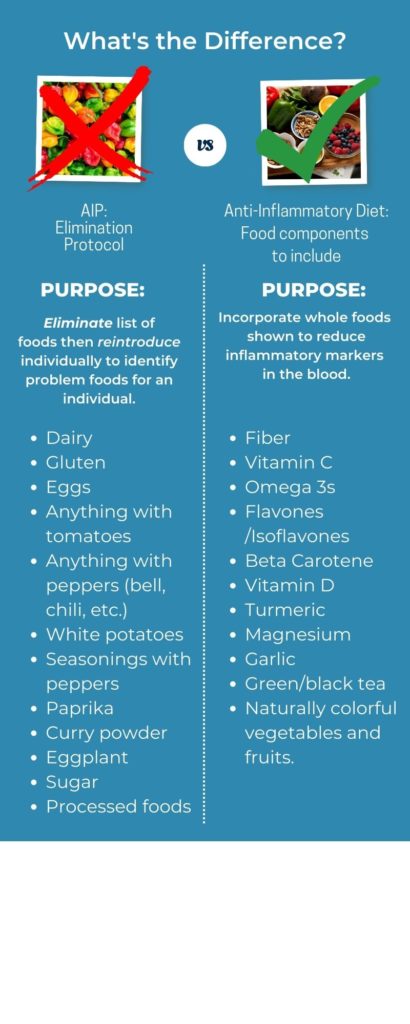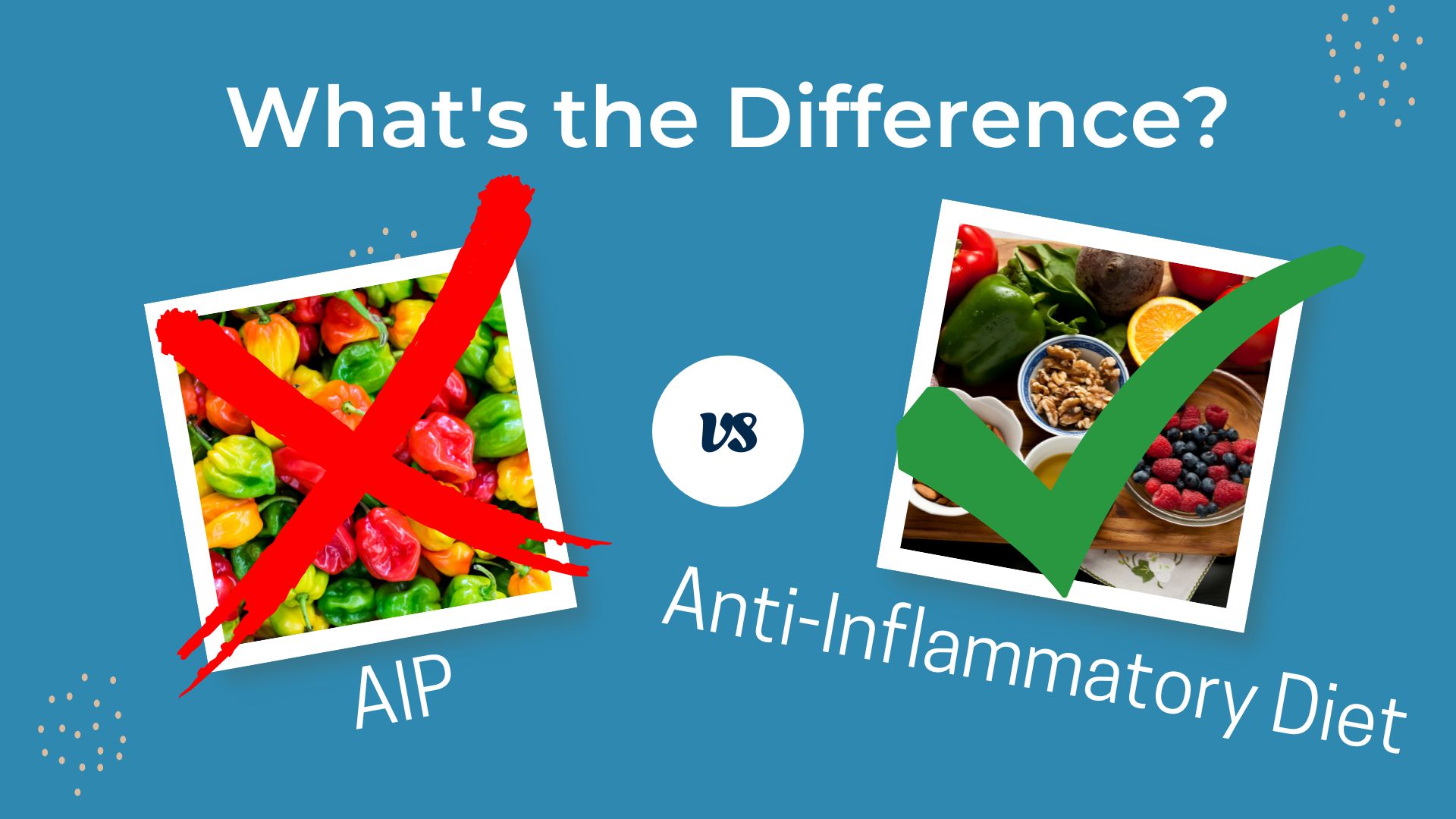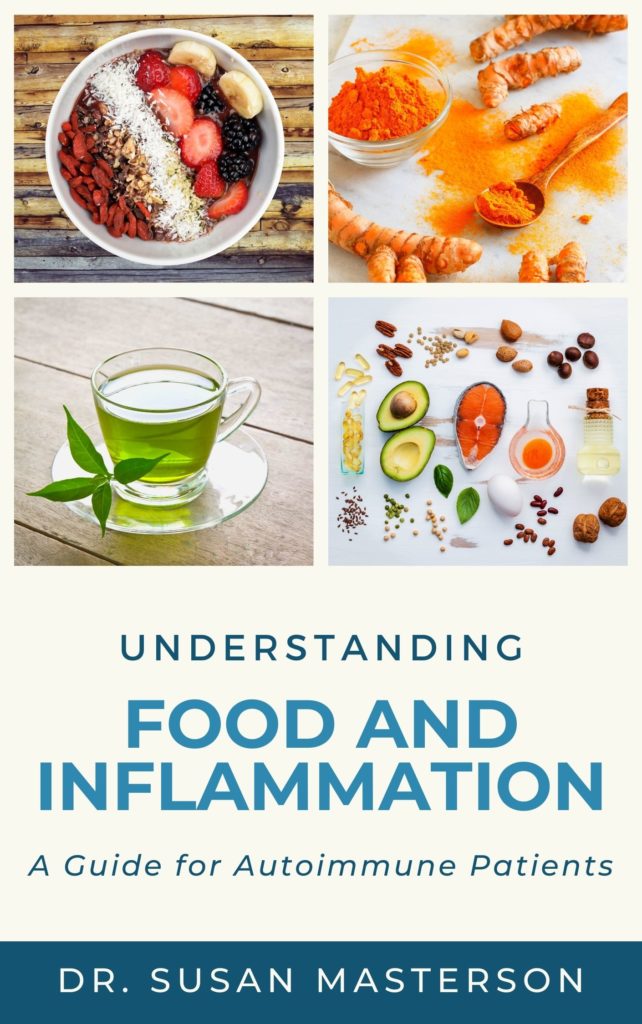AIP vs. Anti-Inflammatory Diet: The Surprisingly Simple Difference
My goal here is to clear up the confusion between the AIP vs. anti-inflammatory diet for people with autoimmune diseases. Already understand the difference? You can find some recipes here.
Before I wrote “Understanding Food and Inflammation“, I often saw reviews for anti-inflammatory cookbooks that said something like this:
“This book isn’t anti-inflammatory, it includes foods that ARE inflammatory”.
This is a common complaint.
And they’d give it one star. I feel bad for those cookbook authors, the reviewers were mistaken. 🙁 Let’s look further at the differences and similarities between AIP vs. anti-inflammatory diet.
What is AIP?
For those of you who aren’t familiar with the term “AIP”, it stands for “Autoimmune Protocol”. The word “protocol” indicates this is different from a “diet”. Some people do say “autoimmune diet” but it’s a more general term and the two are often used interchangeably.
So how is this different from an anti-inflammatory diet?
Think of it this way: An anti-inflammatory diet encourages consumption of foods that are scientifically shown to reduce inflammatory markers in the blood. Hence, the green check on the image above, which means “eat these things”.
The AIP is an elimination diet that aims to identify foods causing an aggravation of symptoms, or a flare – usually because someone has a particular sensitivity to one or more things from the list. Hence, the red X on the image above, which means “don’t eat these things”.
How does the AIP work?
The protocol starts with a very strict elimination phase in which you cut out a long list of foods. This aims to get symptoms to calm down enough to get a “clean” starting point where no foods are causing your symptoms.
Then, you add one thing at a time to see if it’s a culprit. If symptoms don’t reappear, then you know that food wasn’t a problem and you can assume it’s ok to eat. Gradually you add one food type from the list at a time. If anything coincides with a new symptom aggravation, you can assume it’s a no-go for you.
Here’s a look at the elimination list (not a complete list):
- Gluten
- Eggs
- Dairy Products
- Tomatoes
- Sugar
- Any processed foods.
- Coffee
- Caffeine
- Nightshades (peppers, curry, eggplant, white potatoes, steak seasoning, any seasoning blend with peppers, paprika)
However, without controlling for everything else in your life, you can’t know for 100% absolute sure that any particular food was the cause. Research studies haven’t been able to do this, so some results out there are considered promising, but not definitive.
To access subscriber-only downloads, click here!
How Effective is the AIP?
If you want to look at the rigorous scientific studies, google “AIP” or “autoimmune protocol” and include the term “scholarly articles“. You will discover there are almost none that were conducted by a lab affiliated with one or more universities. Many of your search results will be for articles written by popular publications or people promoting the protocol. I’m not condemning those articles at all, but readers need to be clear about what they are seeing, because there is a difference.
What is an Anti-Inflammatory Diet?
This is a diet that encourages consumption of foods that have been scientifically shown to reduce inflammatory markers in the general population. It closely resembles the traditional Mediterranean diet, and directs people to food that are abundant in micronutrients (vitamins and minerals) while reining in the calories from carbohydrates and saturated fats.
How Does the Anti-Inflammatory Diet Work?
It very closely resembles the Mediterranean Diet, and consists of whole, unprocessed foods that contain high quantities of components such as:
- Fiber
- Vitamins C and D
- Omega 3 fatty acids
- Olive Oil
- Phytonutrients such as flavanols and isoflavones.
- Beta carotene
- Green and black teas
- Garlic and Onions
- Magnesium
- Herbs and Spices (especially turmeric)
How Effective is the Anti-Inflammatory Diet?
Many people who incorporate these foods are simultaneously cutting down on consumption of foods that are inflammatory including processed sugars and starches, and added trans-fatty acids. For reducing risk of diseases like heart disease, dementia, diabetes, research finds it promising.
For autoimmune patients, the research isn’t as clear. Anecdotally, cutting those unhealthy foods may be all someone needs to feel better to one degree or another. Many people attest to this, but more research is needed to tease apart what contributes to symptoms and inflammatory markers with complete certainty. The research is optimistic for rheumatoid arthritis, and studies have also shown that improving the intestinal microbiome through diet is a promising direction for Sjogren’s Disease and Multiple Sclerosis.
What do the AIP and Anti-Inflammatory Diet Have in Common?
- Both discourage eating refined sugars and processed foods.
- Both encourage whole foods – the closer to nature, the better!
- Both have people swear by them to be effective.
- Both have preliminary research showing some promise, however the anti-inflammatory diet research is more plentiful and more widely accepted by the scientific community than the AIP research.
Choosing Between Using the AIP or Anti-Inflammatory Diet
For deciding between the AIP vs. anti-inflammatory diet, consider these things: For many people, the anti-inflammatory diet is easier to implement and stick to. For others, it’s not enough. Pursuing the AIP approach requires strict discipline and commitment but if it identifies a problem food, it may well be worth all the effort! Check out the handy infographic at the bottom of this page for a quick overview of the differences.
Want to dig a little deeper?
The Distinction is Surprisingly Simple

Looking for recipes?
For healthy cooking, I love my Ninja Foodie! It’s extremely versatile and cleans up so easily! (if you click on the Ninja link and make a purchase, I may receive a small commission at no extra cost to you).

